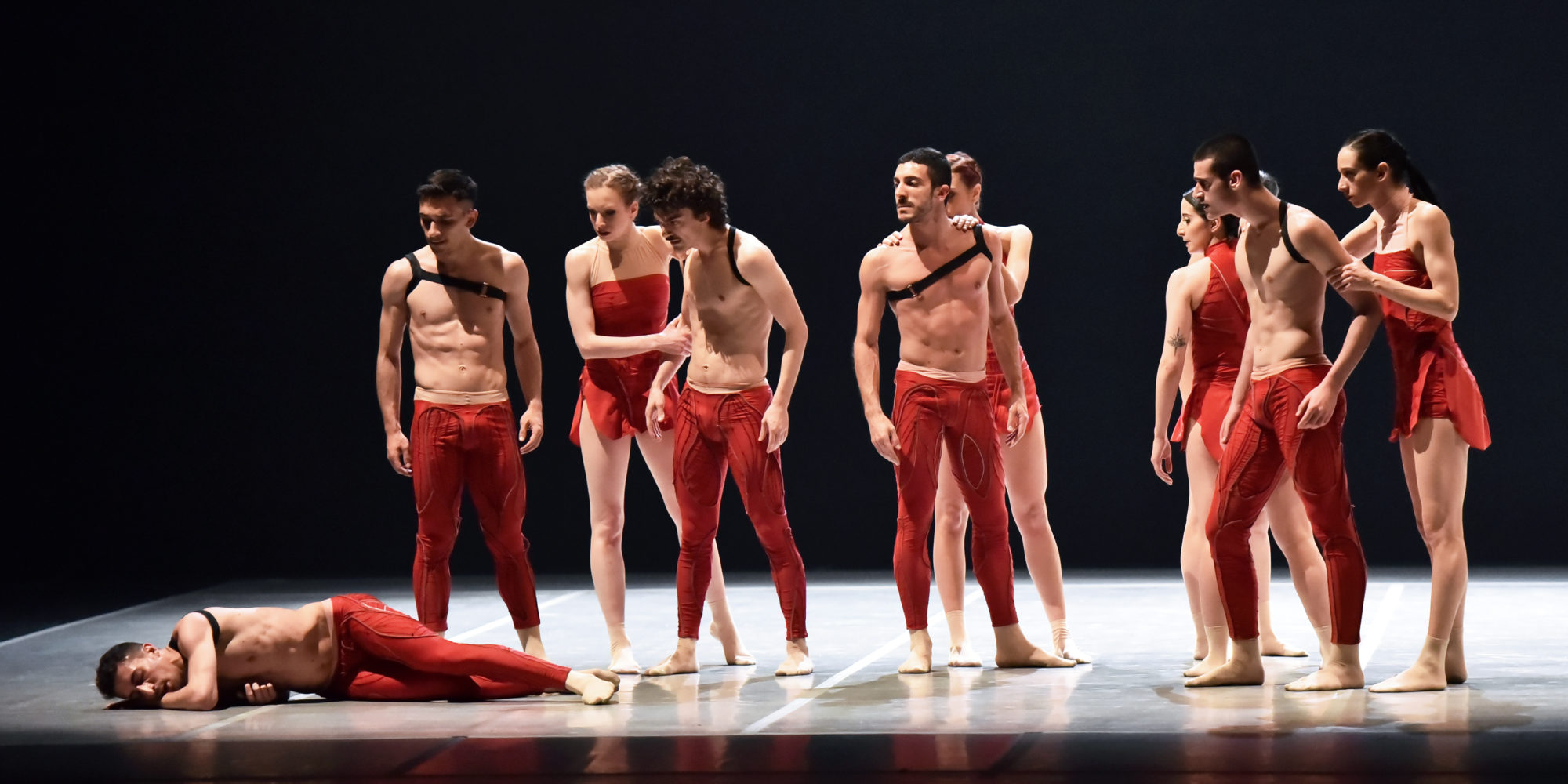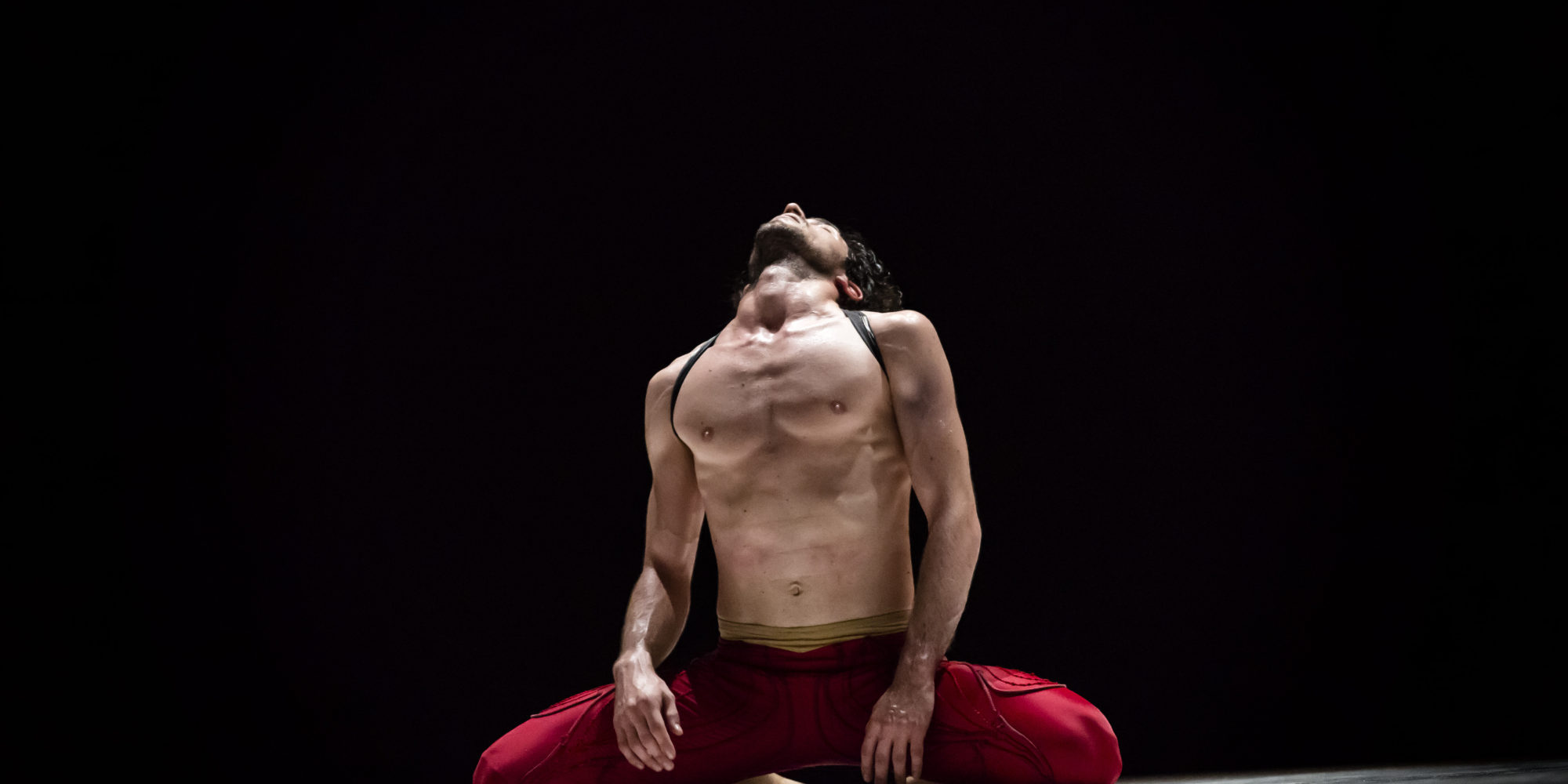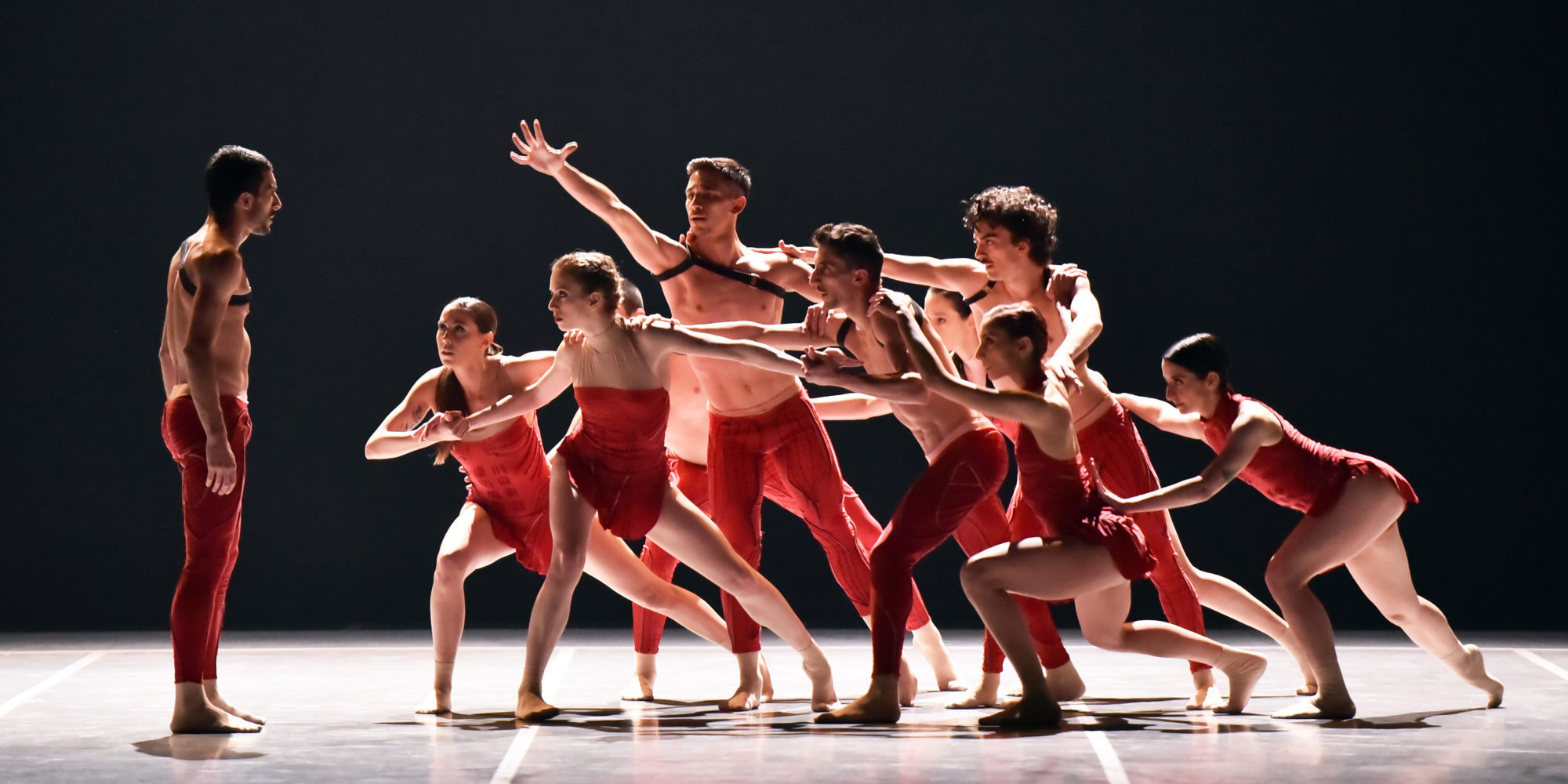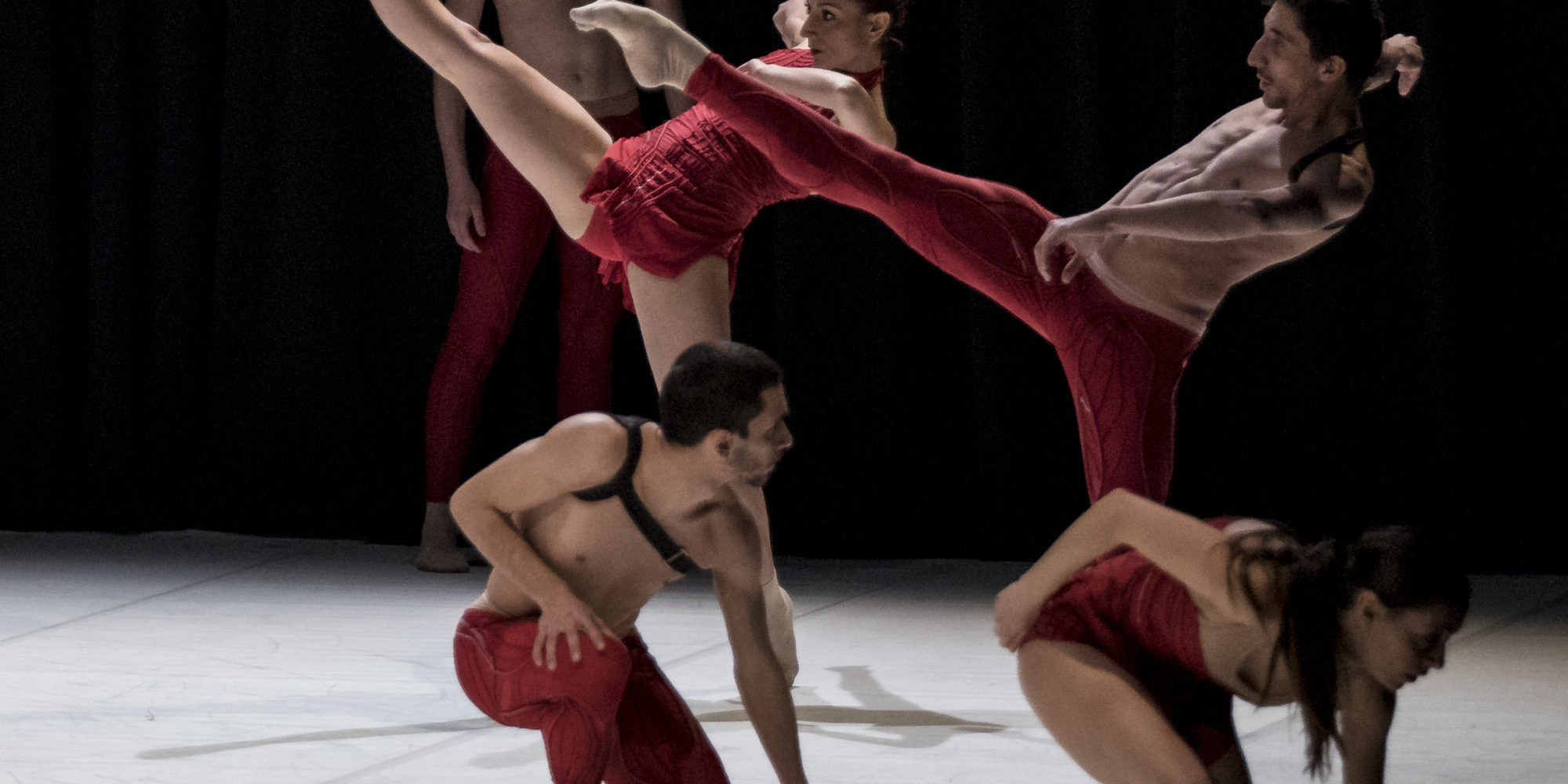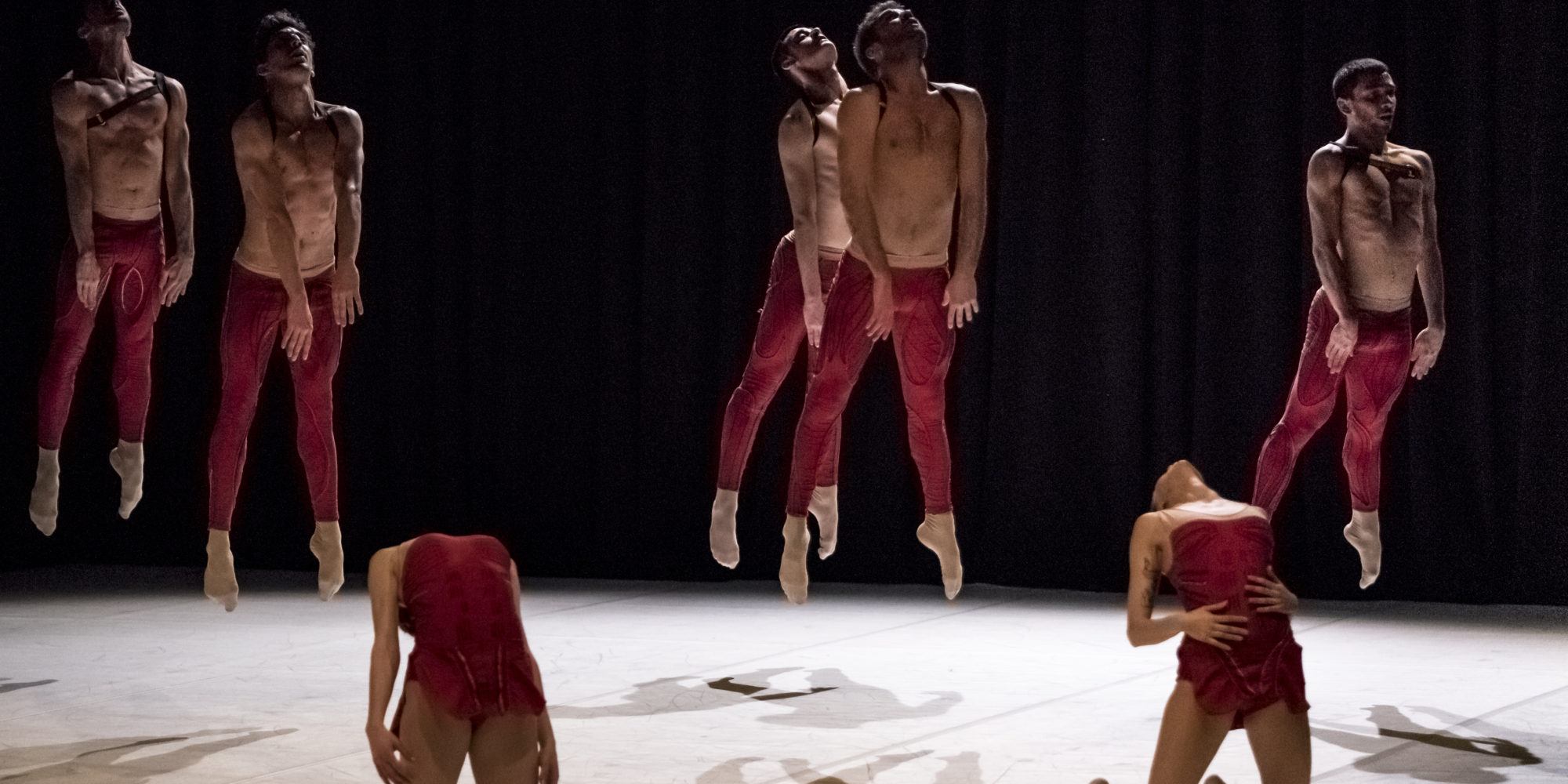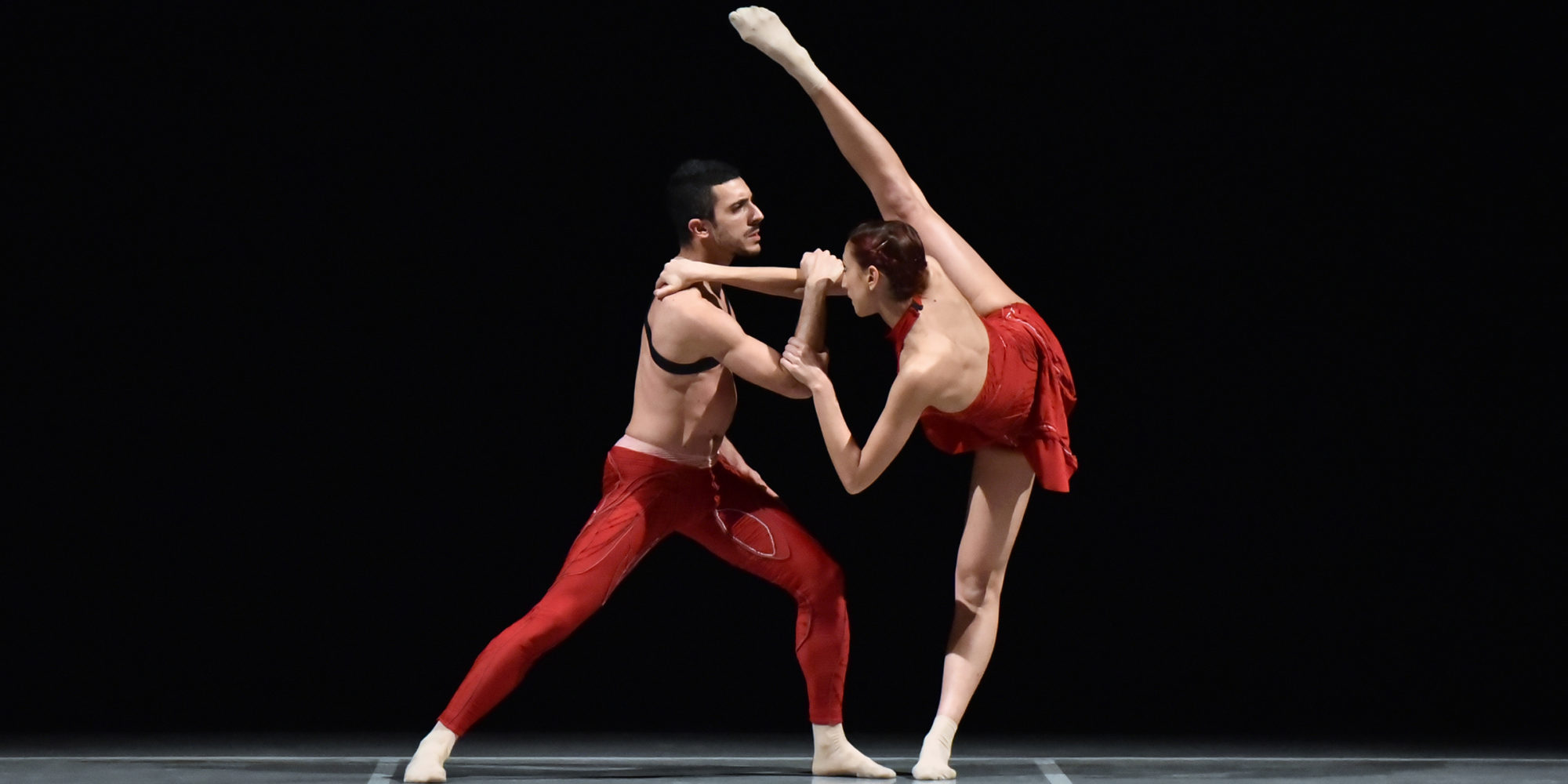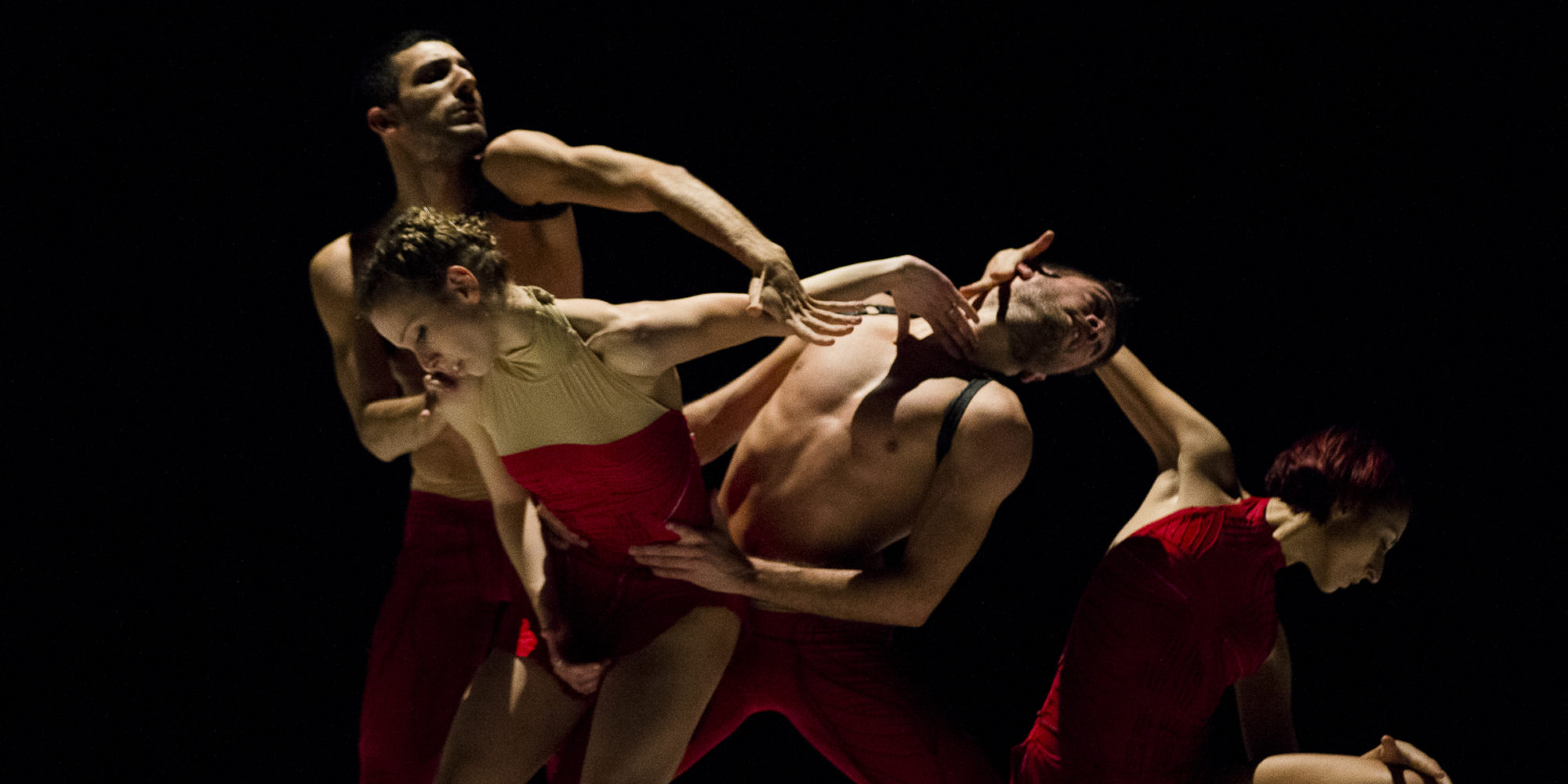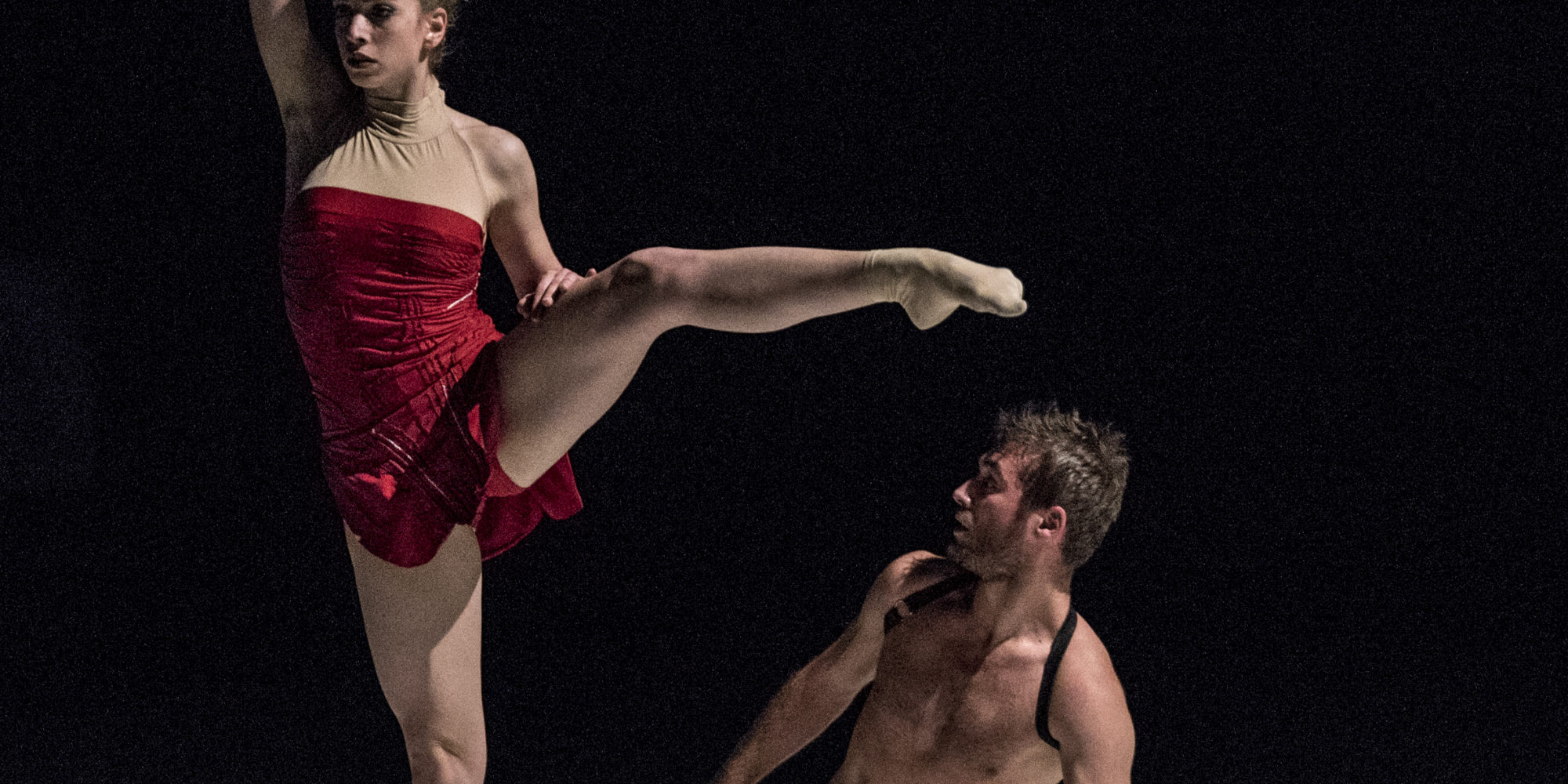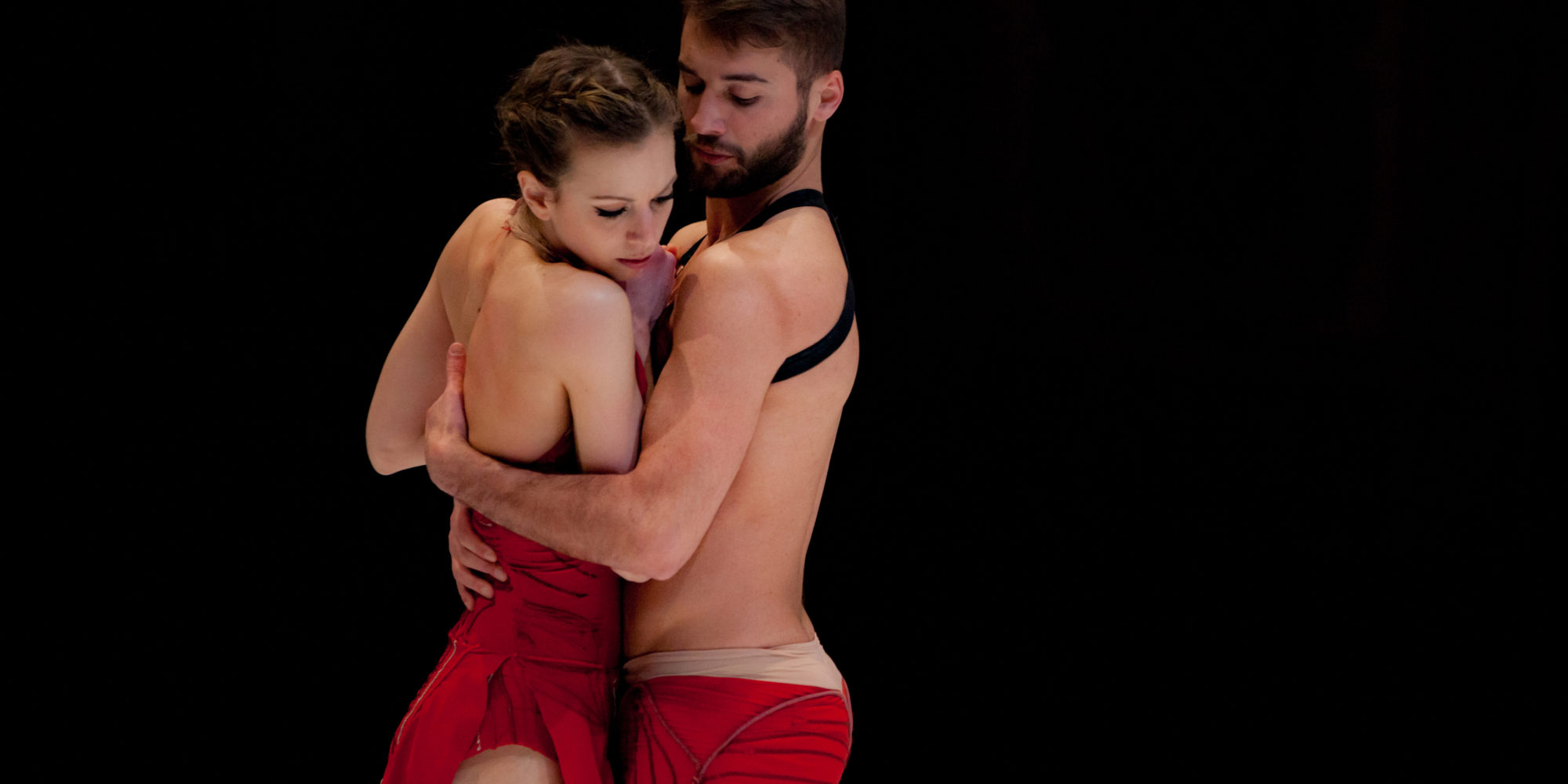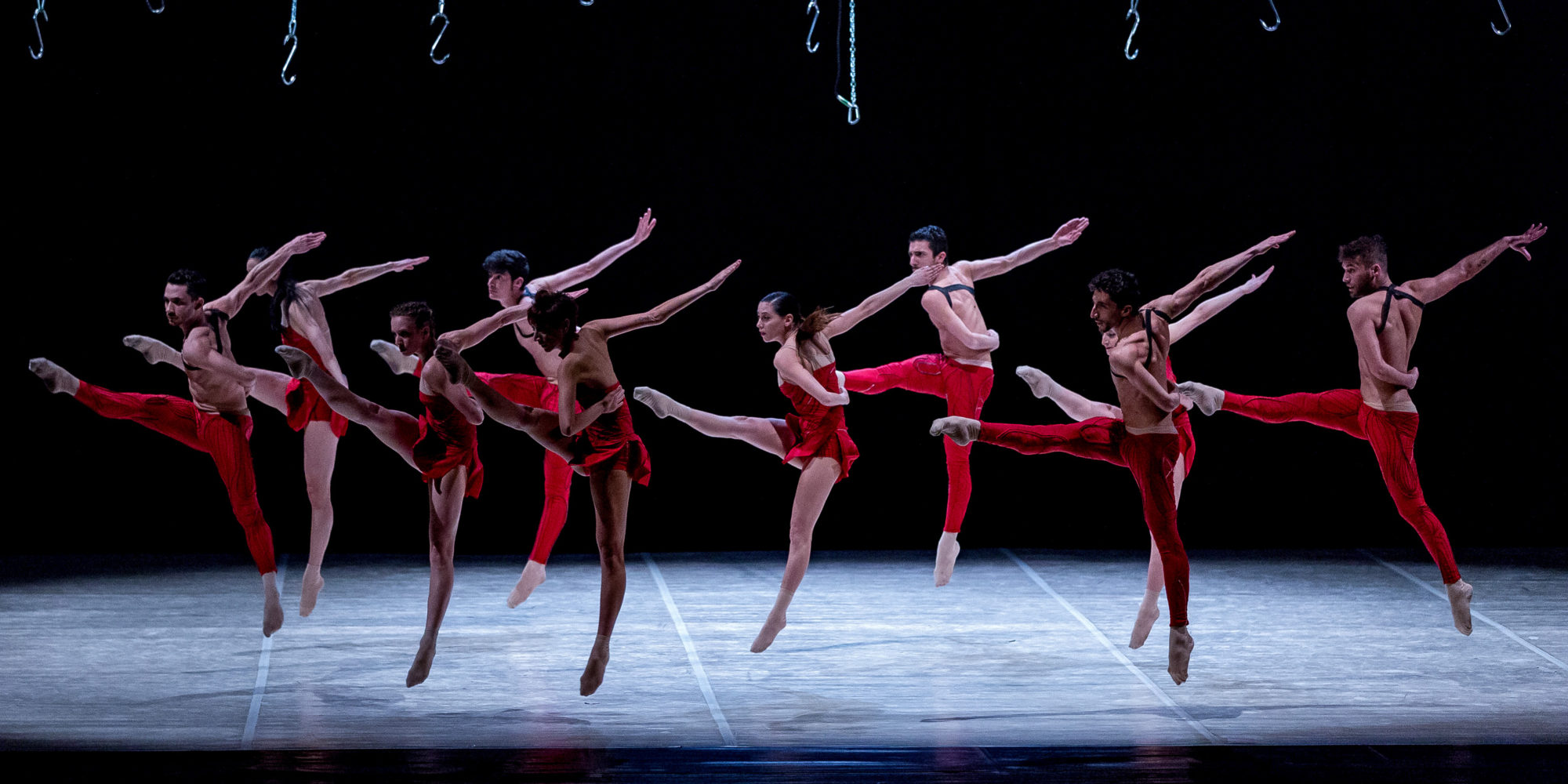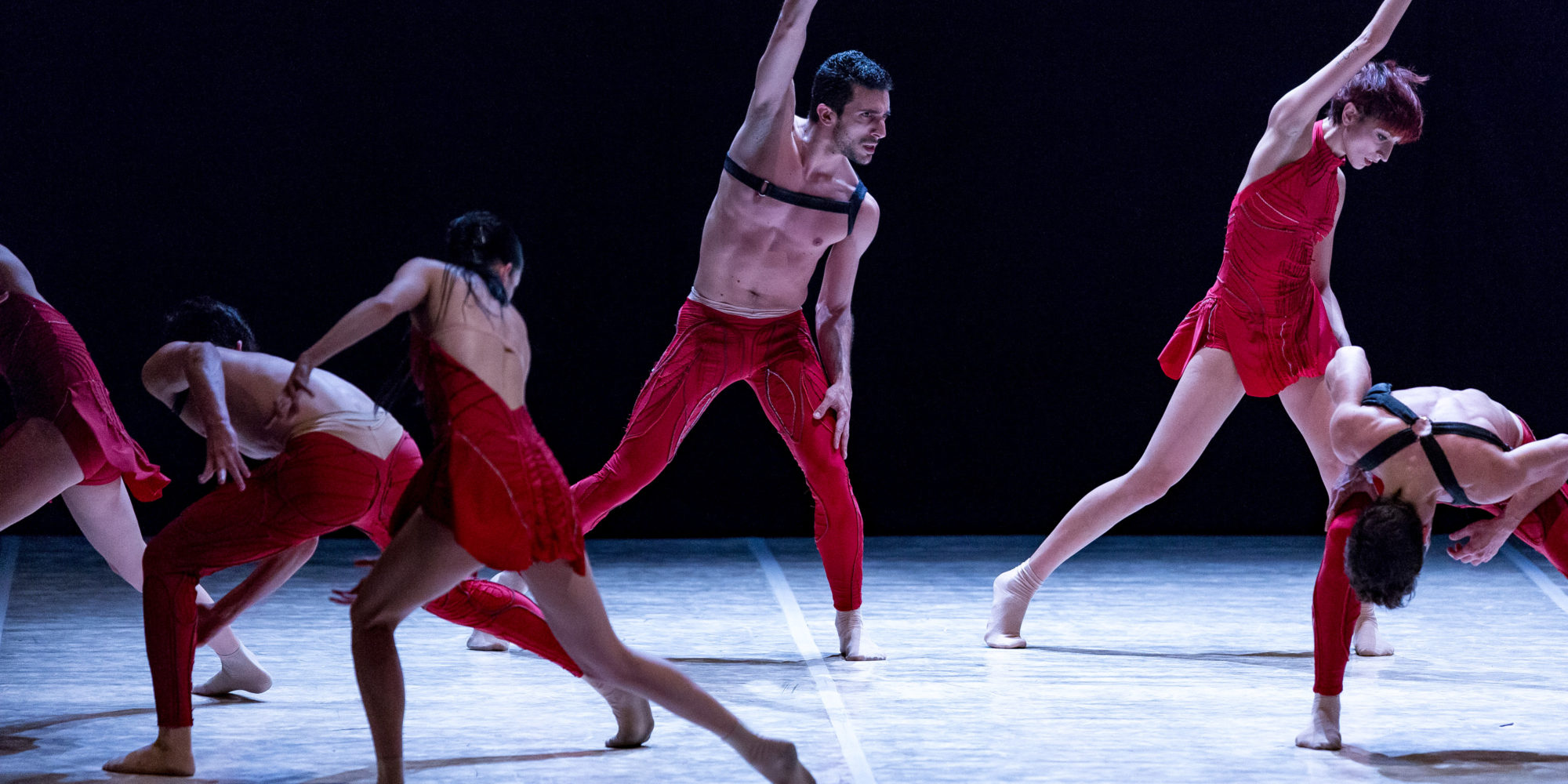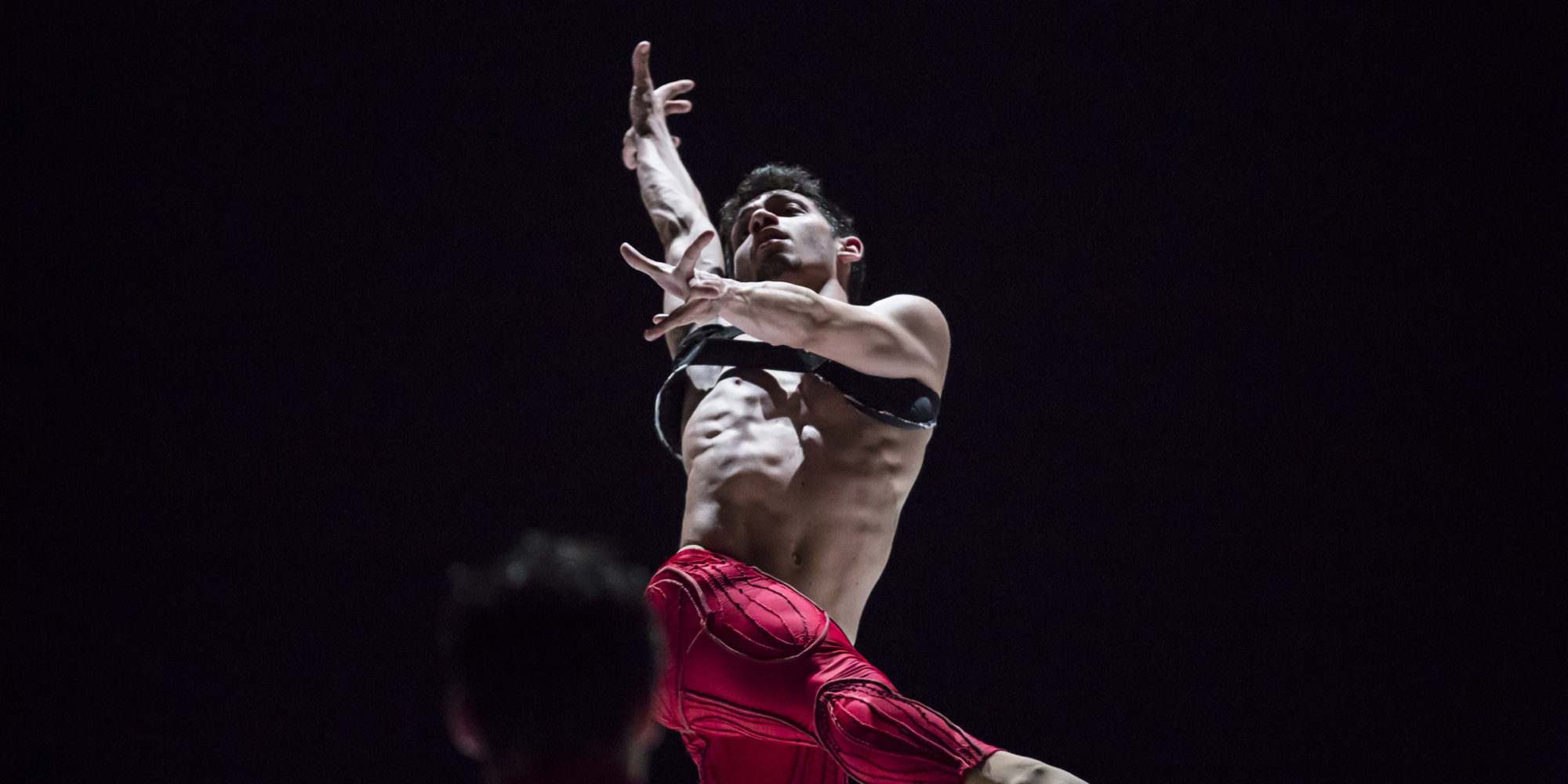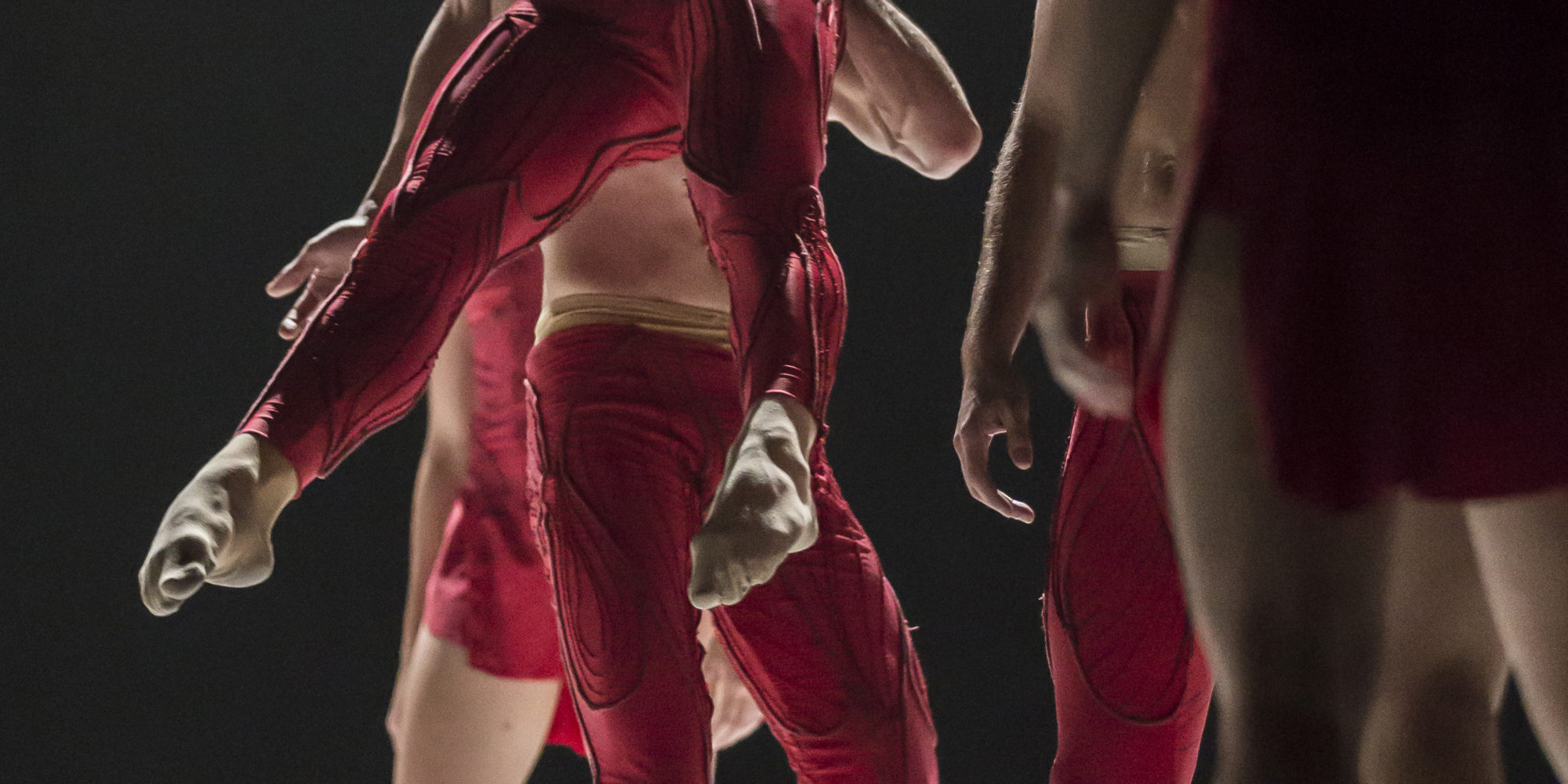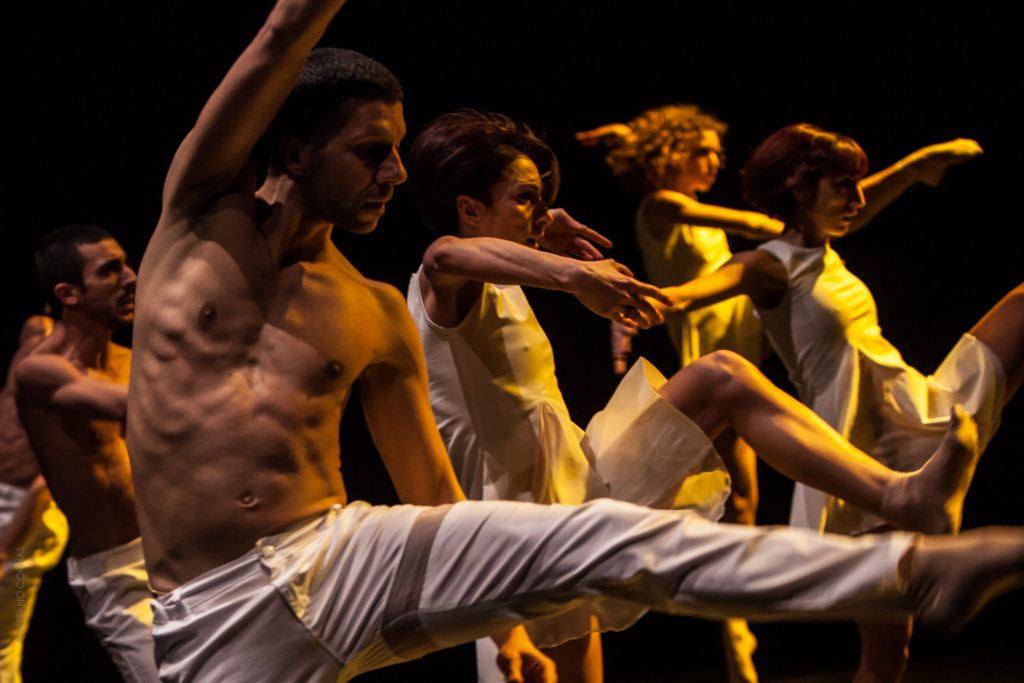
This Italian dance company’s ensemble featured two pieces. Like two sides of a coin they contrasted, yet complimented each other. Both were set to well known classical scores, but that is where the similarities end. One evoked a dark and violent power, the other was tender and sensual.
The first piece is set to Stravinsky’s ‘The Rite of Spring’. A relentless cacophony of sound. To this the scene is set, with the on/off flicker of a fluorescent light illuminating meat hooks swinging from the ceiling and motionless dancers staring impassively at a figure being dragged across the stage. From the outset we are aware that this is going to be anything but a gentile experience. As the music builds to its looming crescendo, the dance becomes fiercer and more menacing. The violence is explicit; dancers intimidate, torment and emasculate each other. There’s an unsettling tension to viewing this piece; the incredible energy and the bold and frenetic choreography are entirely captivating, but the explicit reference to aggressive domination is obviously uncomfortable.
What makes this so disturbing is that most of the violence is directed from men on to women, and because of this you could translate the piece as being a commentary on the abuse of masculine power (especially given the current climate of high profile misogyny claims). But for me the piece was examining something broarder, the potential for us all to exploit the weak, in the quest for power or even stability. It seemed to be conjuring up some oppressive regime, where fear and physical might prevail. In this environment of fear and coercion, each dancer seeks innately to save themselves, jostling to not be the weakest. The weakest must be searched out and scapegoated, the piece ends with the inevitable sacrifice. What struck me most was the profound sense of isolation through all the brutal cavorting, there were moments when each dancer would move out of pace of the others and their sense of isolation and vulnerability in all the chaos was palpable.
The second piece was set to Ravel’s ‘Bolero’, that rolling, fluid sashay of the flutes and oboes. Paralleling the lithe sway of the music, as if tethered from elastic, the dancers undulated, pulling apart and then back together. A constant kinetic wave pulling out from one body to the next before rebounding back again. The whole character of the dance was sensual and voluptuous. The lighting was soft and dappled, reminiscent of the flicker of streetlight through a bedroom blind, illuminating the intimate scene within. The essence of the piece seemed to be “rippling”; rippling motion, rippling score, rippling lighting. In keeping with this theme framing the whole scene, was a captivating bit of set, a giant concertina form of jet black crepe material. Contorted by the dancers this was just as much an integral part of the dance as the performers. It would bend to cocoon the dancers in momentary niches, framing activity or swallow them up whole, later releasing a limb or two to interact again with the dance. This giant “caterpillar” form would ripple around the stage, undulating vertically as well as horizontally allowing dancers to emerge from below or beside it. It really was quite ingenious and bewitching. The rhythmic pulse that flowed through every element of the piece was hypnotising.
So there you have it, a bit of an oxymoron of a program. Two contrasting themes, but both equally well crafted and intriguing.
-MG

